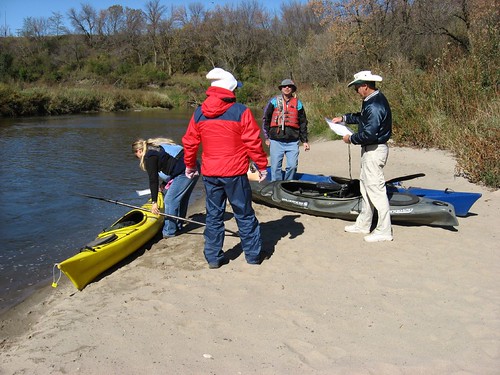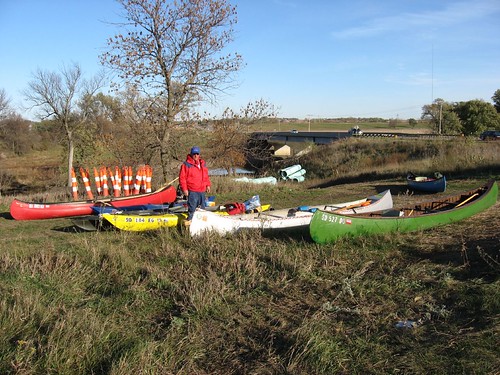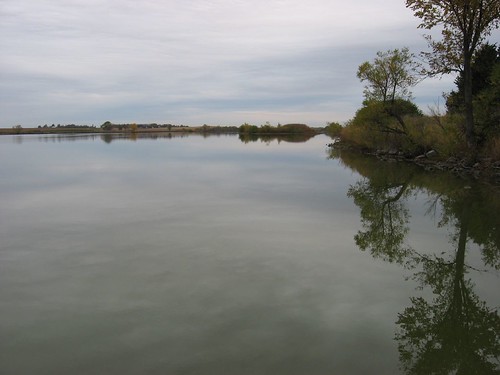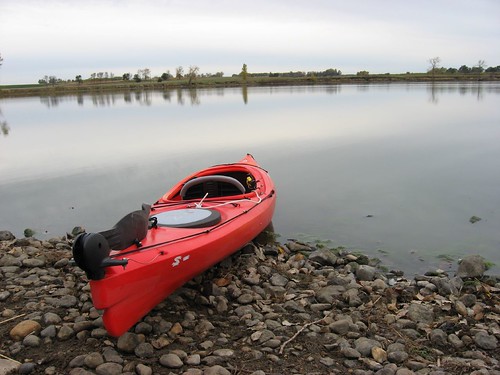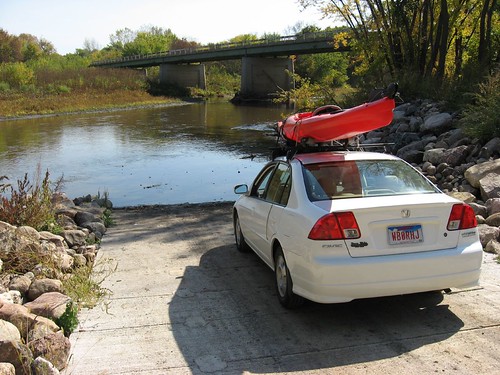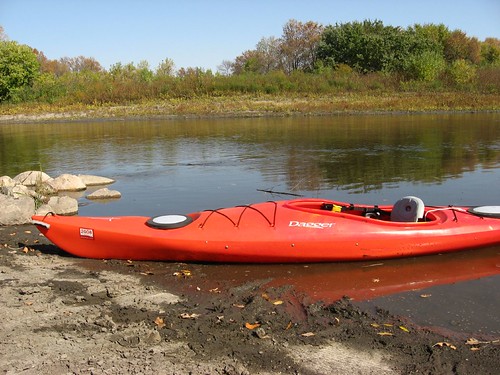This was a beautiful fall day in late October, and I wanted to be sure and get in at least one last cruise before the onset of winter. I decided to head out to Lake Alvin, about 10 miles southeast of Sioux Falls, and see how the lake environment was changing as the season advances. I arrived about 10:00 a.m. to a deserted lake – no cars, no boats, no people about – and a temperature of about 40 degrees. The sun was bright on the water; there was a little breeze that created wind waves in the more exposed portion of the lake of about 4 inches or so. I stayed out for about two hours, and the temperature gradually rose into the 50s. I did not need a jacket nor were gloves necessary.
>
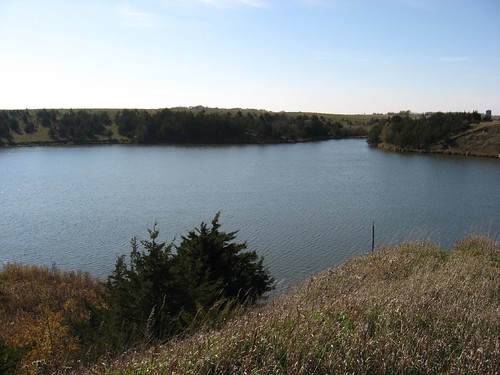
The docks are still in at both the State Park and at the public access area. More importantly, the water was higher than I had seen it all summer. I was able to paddle up into the outlet of the lake all the way to the spillway without touching bottom. I paddled around the total perimeter of the lake and then went up Nine Mile Creek until I reached the bridge over 479th Ave. This was the first time since last spring that I was able to make it up Nine Mile, and I could easily have continued even further. The water in the creek was consistently 3 to 4 feet deep. The water throughout the lake was clearer than it has been; I could see bottom easily up to about 2 ½ feet.
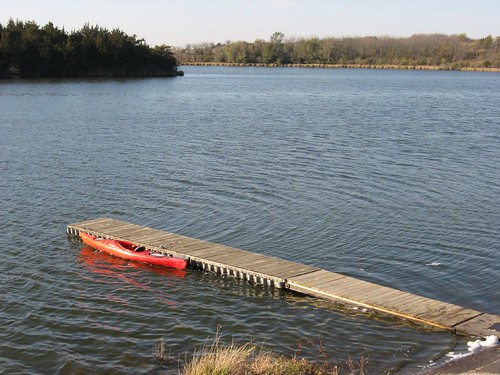
During most of the cruise, there was little sign of wildlife; but, as I moved up into the southwestern part of the lake toward the mouth of Nine Mile Creek, I saw lots of waterfowl. I came across a large flock of geese – maybe 30 of them – and they remained stationary on the water as I allowed my kayak to drift along with the wind toward them. There were a couple groups of ducks behind the geese, and they were spooked by my presence and flew off. Later, the geese also took off in a group and moved east, away from me. At about the same point, I saw multiple large bullheads coming up to the surface of the water around my kayak.

The cruise was pretty quiet. As I mentioned, there were no other boats. From time-to-time, there was some vehicle noise, but mostly the only sound was the wind moving through the dried leaves of large cottonwood trees.
On this trip, I put in at the State Park and was able to enter and exit the kayak from the dock without getting my feet wet. The water was a little chilly, and I did not want to wade into the lake to get into the kayak. It all worked out pretty well, and I had a totally dry cruise around the lake.
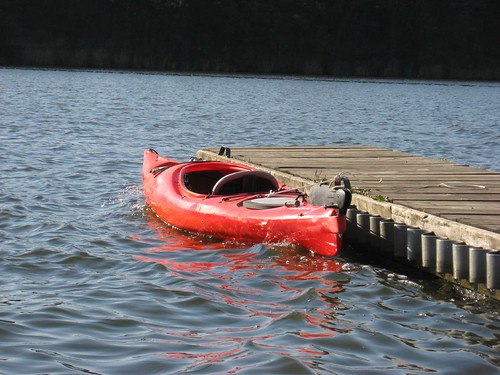
Normally, by this time of the year I have taken the Yakama rack off the top of my car. I have a Honda Civic Gas/Electric car, and the rack has a major effect upon my gas mileage. Normally, I get close to 50 mpg with the Hybrid, but with the rack affixed to the top of the car, the mileage drops down to about 38 mpg. I think that I will leave the rack on a bit longer this year. I am hoping to get in another cruise before the inevitable winter conditions arrive.
There are a couple of earlier descriptions of conditions on Lake Alvin in this blog. If you are interested in reading more about this very accessible body of water, just look at some of the earlier entries. .

